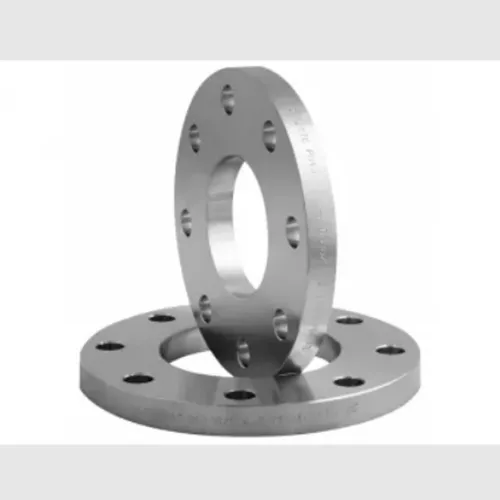-
Cangzhou Yulong Steel Co., Ltd.
-
Phone:
+86 13303177267 -
Email:
admin@ylsteelfittings.com
- English
- Arabic
- Italian
- Spanish
- Portuguese
- German
- kazakh
- Persian
- Greek
- French
- Russian
- Polish
- Thai
- Indonesian
- Vietnamese
- Zulu
- Korean
- Uzbek
- Hindi
- Serbian
- Malay
- Ukrainian
- Gujarati
- Haitian Creole
- hausa
- hawaiian
- Hebrew
- Miao
- Hungarian
- Icelandic
- igbo
- irish
- Japanese
- Javanese
- Kannada
- Khmer
- Rwandese
- Afrikaans
- Albanian
- Amharic
- Armenian
- Azerbaijani
- Basque
- Belarusian
- Bengali
- Bosnian
- Bulgarian
- Catalan
- Cebuano
- China
- China (Taiwan)
- Corsican
- Croatian
- Czech
- Danish
- Esperanto
- Estonian
- Finnish
- Frisian
- Galician
- Georgian
- Kurdish
- Kyrgyz
- Lao
- Latin
- Latvian
- Lithuanian
- Luxembourgish
- Macedonian
- Malgashi
- Malayalam
- Maltese
- Maori
- Marathi
- Mongolian
- Myanmar
- Nepali
- Norwegian
- Norwegian
- Occitan
- Pashto
- Dutch
- Punjabi
- Romanian
- Samoan
- Scottish Gaelic
- Sesotho
- Shona
- Sindhi
- Sinhala
- Slovak
- Slovenian
- Somali
- Sundanese
- Swahili
- Swedish
- Tagalog
- Tajik
- Tamil
- Tatar
- Telugu
- Turkish
- Turkmen
- Urdu
- Uighur
- Welsh
- Bantu
- Yiddish
- Yoruba

Dec . 05, 2024 23:54 Back to list
Understanding GOST Flange Specs and Applications in Industrial Systems
Understanding GOST Flanges An Overview
Flanges are critical components in many industrial applications, serving as essential connectors between pipes, valves, and other equipment. Among various types of flanges, GOST flanges, based on the Russian State Standard (GOST), are widely recognized for their specific dimensions and applications. This article aims to provide an overview of GOST flanges, their specifications, advantages, and applications.
What Are GOST Flanges?
GOST flanges conform to the requirements set by the GOST standards, which are national standards in Russia and other countries that were part of the former USSR. These standards specify the design, dimensions, and materials of various industrial components, including flanges. GOST flanges are commonly used in industries that require robust and reliable piping systems, such as oil and gas, water supply, and chemical processing.
Types of GOST Flanges
GOST flanges come in various types, each suited for different applications. The most common types include
1. Weld Neck Flanges These flanges have a long neck that allows them to be welded to the pipe. They are ideal for high-pressure applications and provide strong mechanical integrity.
2. Slip-On Flanges Designed to slip over the pipe, these flanges are cost-effective and easier to install. However, they are generally not recommended for high-pressure applications.
3. Blind Flanges Used to close off a piping system, these flanges do not have a hole in the center. They are essential for maintenance and testing purposes.
4. Lap Joint Flanges These flanges are used in conjunction with a stub end and allow for easy disassembly of piping systems. They are often used in low-pressure applications.
5. Socket Weld Flanges These provide a strong connection by allowing the pipe to fit into the flange socket, which is then welded. They are suitable for high-pressure and high-temperature applications.
Specifications
The specifications for GOST flanges include dimensions, material grades, and pressure ratings. The most common GOST standards related to flanges are GOST 12820, GOST 33259, and GOST 17378. Depending on the application, GOST flanges are available in various materials such as carbon steel, stainless steel, and alloy steel, each offering distinct advantages concerning strength, corrosion resistance, and temperature tolerance.
Dimensions, including nominal diameters and thicknesses, also vary based on the specific GOST standard and the application requirements. It's crucial for engineers and designers to select the correct type of GOST flange based on the relevant industry standards and specific project requirements.
gost flange

Advantages of GOST Flanges
The widespread use of GOST flanges can be attributed to several advantages
1. Standardization The GOST standards ensure that flanges produced in different manufacturers are compatible with each other. This standardization simplifies installation and maintenance processes.
2. Durability GOST flanges are designed to withstand high pressure and temperature variations, making them suitable for demanding industrial environments.
3. Cost-Effectiveness With a variety of types available, engineers can select GOST flanges that meet specific performance needs without unnecessary expenditure.
4. Versatility GOST flanges can be used across a range of applications, from simple plumbing to complex industrial systems.
Applications
GOST flanges are extensively utilized in various sectors, including
- Oil and Gas Due to high-pressure requirements, GOST flanges are vital for transporting crude oil and natural gas safely.
- Water Supply They are commonly used in municipal water systems for reliable connections between pipelines.
- Chemical Processing Industries involved in chemical manufacturing often require flanges that can withstand corrosive environments, making GOST flanges an excellent choice.
Conclusion
In conclusion, GOST flanges play a pivotal role in ensuring the integrity and reliability of piping systems across various industries. Their standardization, durability, and versatility make them indispensable components in modern engineering. As industries continue to evolve and technological advancements emerge, the demand for reliable connection solutions like GOST flanges will remain vital in supporting infrastructure and systems worldwide. Understanding their specifications, types, and applications can aid engineers and technicians in selecting the appropriate flanges for their projects, ensuring efficiency and safety in operations.
Latest news
-
ANSI 150P SS304 SO FLANGE
NewsFeb.14,2025
-
ASTM A333GR6 STEEL PIPE
NewsJan.20,2025
-
ANSI B16.5 WELDING NECK FLANGE
NewsJan.15,2026
-
ANSI B16.5 SLIP-ON FLANGE
NewsApr.19,2024
-
SABS 1123 FLANGE
NewsJan.15,2025
-
DIN86044 PLATE FLANGE
NewsApr.19,2024
-
DIN2527 BLIND FLANGE
NewsApr.12,2024
-
JIS B2311 Butt-Welding Fittings LR/SR 45°/90° /180°Seamless/Weld
NewsApr.23,2024











